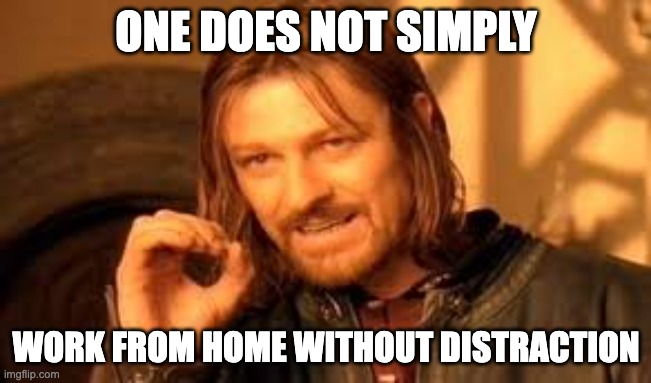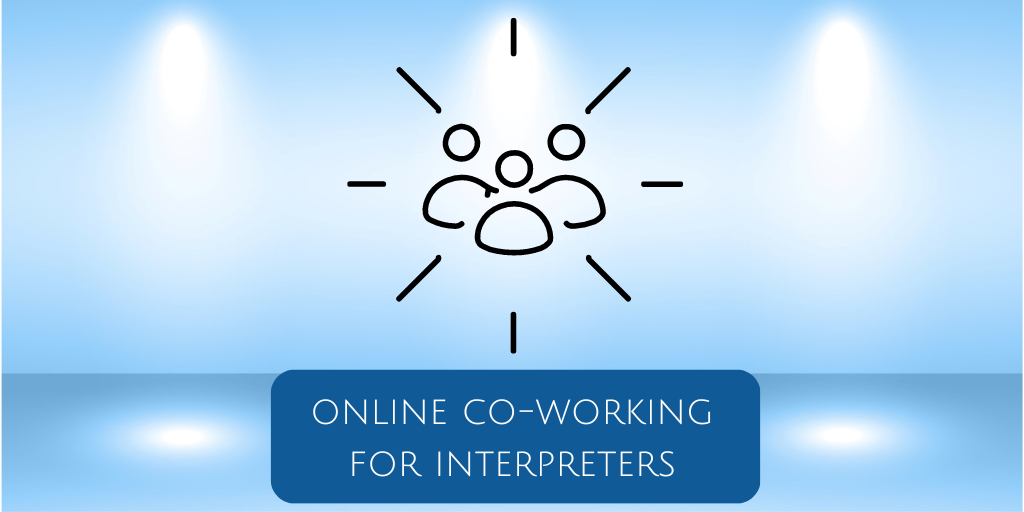Last Friday, I experimented with something new. I set up an online co-working session on Zoom, emailed my subscribers to let them know about it, and waited to see who would turn up and what they would get out of it.
It was clear from some of the questions at the start of the session that some participants were expecting a class or guided session (‘How will you organise us, by language combination, or by technique?’, or ‘Could you put me in a breakout room?’ – well, yes, but who with, and what for?).
Perhaps the co-working concept isn’t that familiar to interpreters, so I thought it would be worth exploring briefly in this post. Above all, I’d like to address another question which a colleague asked me (and, I confess, I asked myself!): what’s the point?
What is co-working?
[For the sake of avoiding ambiguity, I should perhaps explain that I’m not talking about ‘coworking’ in the sense of ‘team interpreting’, where two or more interpreters provide communication to and from the participants in a meeting.]
Co-working spaces are places where freelancers can get their work done, without feeling isolated because they’re working alone at home and without breaking the bank by renting an office full-time.
There are co-working spaces to rent by the hour or day, or you can get together with fellow professionals in a location of your choice, and work alongside each other.
Here are some of the benefits to co-working:
- feeling less isolated. If you work from home, you can end up feeling as if you never talk to another human being.
- better focus & fewer distractions. If you’re sitting next to someone who’s engrossed in their work, it’s harder to justify spending ages on Facebook.
- networking
- synergies. Sometimes another freelancer can offer you a helping hand (for example, with a technical problem that’s causing you difficulty, or a recommendation).
- extra services. Some co-working spaces offer facilities such as a cafe, a relaxation area, conference rooms, and even happy hour, ‘lunch & learn’ events, and more.

So far, so reasonable. I think it’s relatively easy to understand the advantages of a physical co-working space for freelancers: cheaper than a full time rented office, possibly more conducive to focused work than the home environment (no chores, no noise, no other distractions), more convivial, etc.
However, there are two important questions here:
- isn’t this much more relevant for, say, translators, who have written projects to complete, rather than interpreters? After all, when you’re busy with an assignment and interpreting at a meeting (whether in person or remotely), that obviously doesn’t fit the co-working model at all.
- how does online co-working compare to co-working in a physical space?
Online co-working
Online co-working attempts to replicate the ethos of a physical co-working space.
There are many ways to organise an online co-working session: via Skype, WhatsApp, Zoom, etc.
Clearly it isn’t always possible to provide the same services and facilities as in a physical workspace, but the motivation, positive energy, and conviviality are all there. Synergies and networking are also possible, depending on how the co-working is organised.
What happens during an online co-working session
Well, that depends on the organiser and the participants.
There are several co-working platforms and apps for freelancers to choose from, and they all have their own way of doing things.
For example, https://grooveapp.io lets you join a 1 hour session, with a ‘check-in’ at the start to state what you want to work on, and a brief wrap-up at the end. On the other hand, it’s a phone app, which means you might easily be distracted by social media…
https://www.flow.club is another option that allows you to join a session with up to 8 participants. These sessions are hosted, and the host chooses a playlist of music, which you may find motivational or…distracting.
For the co-working session I ran on Friday, I chose a format with a brief ‘check-in’ in the chat box for participants to tell each other what they wanted to work on. Then I set a 50 minute timer, and everyone got on with their own work. Two people chose to go to a breakout room together. At the end, we had a quick chat and shared progress and impressions.
Does it work for interpreters?
The most interesting part of the exercise for me was finding out what each participant was working on.
One person wrote the ‘about’ section for their website, and completed the ‘simultaneous interpreting’ section.
Another participant listened back to a recording of their performance during a recent interpreting assignment – something they dislike doing, and had been putting off.
Some people were preparing meeting documents. One did some shadowing to improve French pronunciation.
I designed an exercise for members of my English retour membership site.
In short: when you’re an interpreter, there are plenty of tasks to be getting on with, other than interpreting itself: meeting prep, working on one of your languages, invoices, posting on social media, translation or other work, preparing classes if you also teach, etc. etc. Or perhaps even some of your ‘home’ admin: making appointments, filing your tax return. The list is endless!
To answer my original question, ‘does it work for interpreters?’, I would say yes, definitely. Although co-working may seem more suited to professionals like translators, copy writers, graphic designers, etc., there are plenty of tasks an interpreter can do during a co-working session.
In fact, these are often the tasks that get pushed to the bottom of the pile after finding clients, preparing for meetings, and actually interpreting. Yet some of them are critical to running your business efficiently (e.g. invoicing), and others are important for keeping your skills up to date (e.g. maintaining your languages, going to CPD events, analysing your interpreting performance). So it’s useful to have an extra motivational boost!
But is it for everyone?
Now that’s a whole other question.
Some people wouldn’t dream of going to an exercise class or the gym without a gym buddy. They’re just not motivated to go alone, and they don’t find it enjoyable.
For these people, a co-working session may be just the ticket. Some of the participants last Friday, for example, said they found it motivating seeing the faces of their colleagues hard at work (camera on). The accountability of the co-working session helped them get much more done, and gave them a sense of satisfaction.
For others, this is a completely pointless exercise. If you’re self-motivated and not prone to distraction or procrastination, you could get just as much (or perhaps more) done by yourself!
Funnily enough, I would have classed myself in this latter category, because I prefer ploughing my own furrow. However, on Friday, when I got halfway through my task and it was becoming rather boring and difficult, instead of stopping and flicking over to emails or LinkedIn, I looked around at the others working so assiduously on their projects, and decided if they could do it, so could I. So I knuckled down and finished my task, which was very satisfying.
Perhaps co-working works for me, too!
What are the options for online co-working?
- Set up your own session. All you need is a like-minded group of people and a communication channel.
- If you’re a member of techforword’s insiders community, you can join regular co-working sessions.
- Come along to my free Friday co-working sessions at 5 pm CET! Apart from anything else, I have a better idea what I’m doing now! 😉
In conclusion
Co-working isn’t for everyone: it may not suit your personality.
If you do decide to join a co-working session or platform, think about how it matches your needs and the way you do things.
One of the great things about the session I set up on Friday is that we’re free, as a group, to make or change the ‘rules’. We decided that we’d check at the beginning of each session, and if anyone wanted to do some interpreting practice with a partner, I would open a breakout room for them. I’m also open to other ideas, for example if participants want to spend some of their time networking.
These free sessions are for you, and you can help shape them!
I’d love to hear your thoughts in the Comments section below. Have you tried online co-working? Did you find it useful, or was it not your cup of tea?

